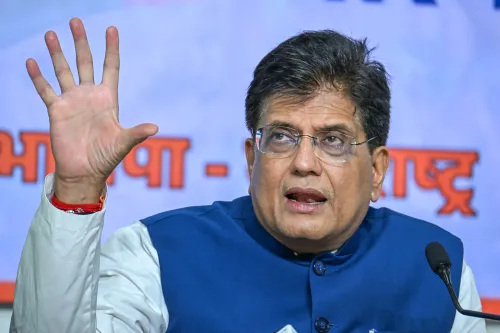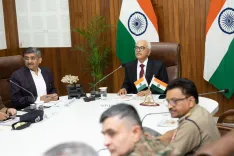Should India Establish a National Financial Grid for Unified Credit and Digital Infrastructure?

Synopsis
Key Takeaways
- National Financial Grid: A proposed framework to unify India's financial infrastructure.
- Enhanced Digital Lending: Aims to boost efficiency and trust in lending processes.
- Importance of Employee Training: Technology must be accompanied by proper education and user engagement.
- MSME Focus: Increased lending for MSMEs driven by digital data accessibility.
- Collaboration with Regulators: SBI's commitment to work with government bodies for smoother KYC processes.
Mumbai, Nov 18 (NationPress) The Chairman of the State Bank of India (SBI), C.S. Setty, has advocated for the establishment of a National Financial Grid designed to seamlessly link crucial elements of India’s financial framework. This includes credit bureaus, fraud registries, eKYC services, UPI, and the account aggregator system.
During his address at the CII Financing Summit in Mumbai, Setty emphasized that a centralized financial grid would invigorate digital lending, improve risk evaluation, and facilitate smoother data interchange among various institutions.
He noted that the Unified Lending Interface (ULI) could serve as a transformative foundation for this proposed national financial grid.
Setty further elaborated that such a system would provide a single open-access infrastructure layer for the entire ecosystem. He illustrated how integrating a common digital framework for fraud and risk management would significantly boost the trustworthiness of lending operations.
The SBI Chairman also remarked that there has been a notable increase in MSME lending over the past five years, driven primarily by the availability of digital data and advanced technological infrastructure.
However, he cautioned that technology alone cannot suffice. He stressed the importance for banks to concentrate on re-skilling and reshaping employee orientation, as digital tools and mobile applications can be ineffective if users do not fully comprehend or adopt them.
These comments come in light of the rapid growth of India’s digital public infrastructure and the rising demand for more integrated, transparent, and secure financial systems.
Last month, Setty announced that the bank is working on making Know Your Customer (KYC) and re-KYC processes more user-friendly.
While speaking to reporters at the Global Fintech Fest 2025, he added that SBI would collaborate closely with regulators and the government to enact these changes.
“We are working to simplify KYC processes. Even if it requires engaging with regulators and the government, SBI is taking the initiative to make the entire KYC process more accessible,” Setty affirmed.
“I believe that banks like SBI excel in acquisition and financing,” he concluded.









